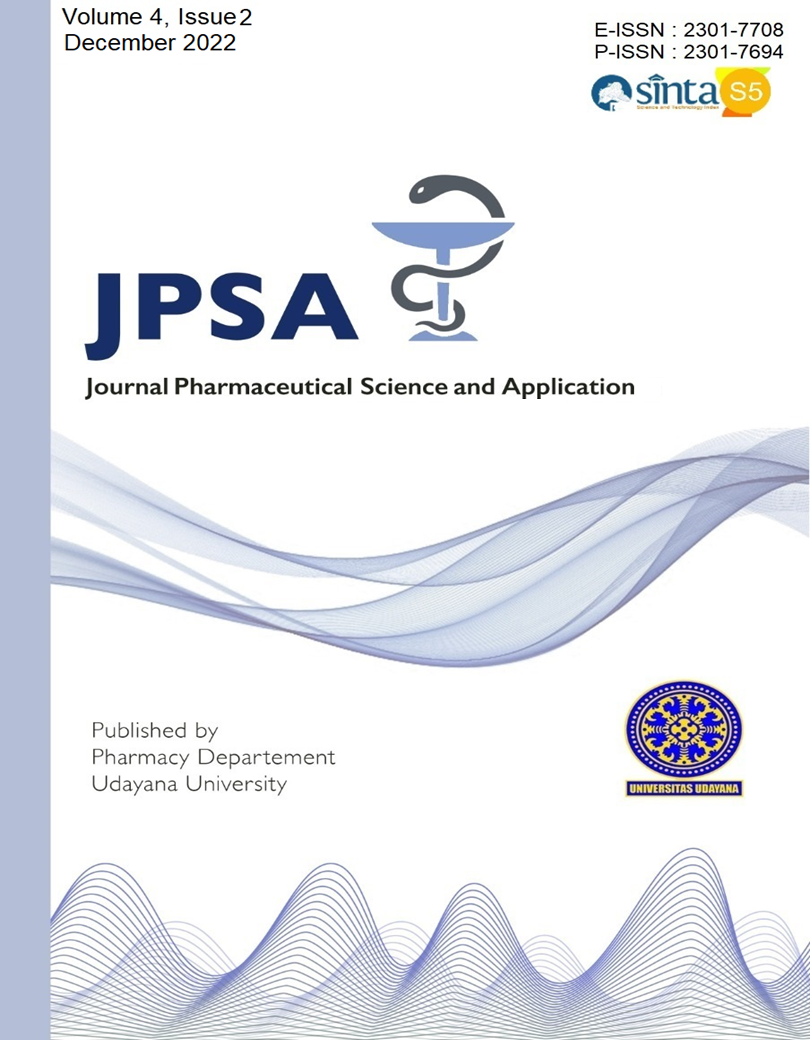FIGURE OF POTENTIAL MEDICATION ERROR IN MEDICINE PRESCRIPTION FOR OUTPATIENT SERVICES OF "X" HOSPITAL IN BALI
Abstract
Background: Medication errors (ME) in health services; in this case, hospitals are supposed to have zero accidents. Evaluation of the potential ME, such as doctor's prescription writing, must still be carried out in an effort to maintain service quality, especially in maintaining patient safety or preventing medication errors. Objective: This research aimed to see the figure of potential medication errors that occur in the prescribing process, in this case, is related to the completeness of the prescription seen from the administration and pharmaceutical approach, as well as the legibility of the prescriptions originating from outpatient services at one of the hospitals in Bali. Methods: This research was observational with a qualitative descriptive approach. Data collection was carried out retrospectively through medication prescriptions for patients received by pharmaceutical installations for outpatient services at hospitals from July until October 2022, totaling 110 prescriptions. Results: Results showed that 1.8% of prescriptions still did not write down the patient's name, then 9.1% of prescriptions had not written down the patient's age, 21.8% of prescriptions had not written down the patient's gender, and as many as 93.6% of prescriptions did not include the patient's weight, 2.7 % of prescriptions did not include the name of the doctor, 75.5% of the prescriptions did not include the doctor's SIP number, 1.8% of the prescriptions still did not write down the rules for using the drug, 10.9% of the prescriptions did not write down the strength of the drug dosage and 19.1% of the prescriptions did not provide information about dosage form to be administered to the patient. This study also shows 8.9% of the prescriptions are Illegible prescription. Conclusion: The results of the research found that administratively and pharmaceutically incomplete prescriptions and also Illegible prescription writing were still found. So the results of this study show how important it is to always evaluate the potential of medication errors, especially at the prescribing and transcribing phases, to improve patient safety.
Keywords: Medication error; Prescription; Hospital; Retrospective
Downloads

This work is licensed under a Creative Commons Attribution 4.0 International License.
Authors who publish with this journal agree to the following terms:
Authors retain copyright and grant the journal right of first publication with the work simultaneously licensed under a Creative Commons Attribution License that allows others to share the work with an acknowledgment of the work's authorship and initial publication in this journal.
Authors are able to enter into separate, additional contractual arrangements for the non-exclusive distribution of the journal's published version of the work (e.g., post it to an institutional repository or publish it in a book), with an acknowledgment of its initial publication in this journal.
Authors are permitted and encouraged to post their work online (e.g., in institutional repositories or on their website) prior to and during the submission process, as it can lead to productive exchanges, as well as earlier and greater citation of published work. (See The Effect of Open Access).

This work is licensed under a Creative Commons Attribution 4.0 International License.


 HOME
HOME
















